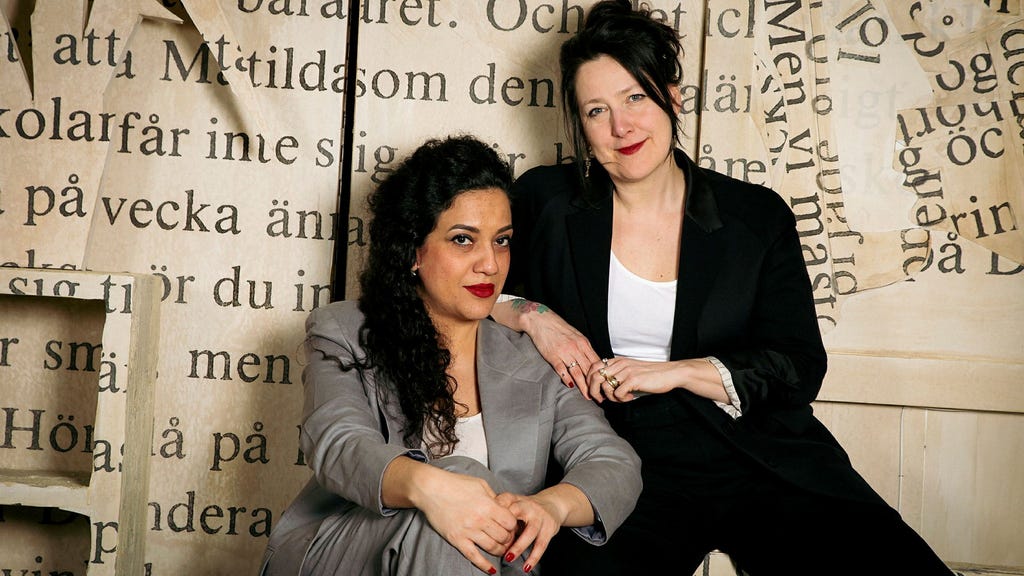The controversy surrounding Ida Linde and Athena Farrokhzad’s tenure as program directors for the International Authors’ Stage at Kulturhuset Stadsteatern in Stockholm highlights the complex intersection of artistic freedom, political activism, and institutional responsibility. Linde and Farrokhzad, both accomplished writers, were appointed in the fall of 2022 to curate a program featuring prominent international authors in conversations with a live audience. Their leadership, however, became the subject of public debate and internal tensions, culminating in the non-renewal of their contract, a decision they attribute to their outspoken support for Palestine during the 2022 Gaza conflict.
The core of the dispute revolves around the perceived conflict between Linde and Farrokhzad’s personal political views and their professional roles at a publicly funded institution. Critics, including Aron Verständig, chairman of the Jewish Central Council, argued that their pro-Palestinian stance created an environment of unease and exclusion for Jewish and Israeli audiences at Kulturhuset Stadsteatern. Verständig relayed concerns from community members, suggesting that the institution was no longer a safe or welcoming space for them. This criticism underscores the delicate balance institutions must strike between upholding freedom of expression and ensuring an inclusive atmosphere for all members of the community.
In response to the non-renewal of their contract, Linde and Farrokhzad issued a joint statement asserting that their outspoken support for Palestine was the primary reason behind the decision. They maintain that Kulturhuset Stadsteatern attempted to curtail their freedom of expression by scrutinizing their social media posts, requesting pre-approval for published articles, and questioning their choice of guests with Palestinian backgrounds. They argue that these actions contradict the institution’s own stated commitment to artistic freedom and free speech. Furthermore, they highlight their successful track record, citing increased audience numbers and the diversification of themes, languages, and genres represented in their programming. This success, they claim, was due to their collaborative approach and the support of colleagues, publishers, and moderators.
Kulturhuset Stadsteatern’s cultural director, Linda Beijer, refutes Linde and Farrokhzad’s claims. She contends that their contract was not renewed simply due to the time-limited nature of these appointments, a standard practice for all artistic directors at the institution. Beijer points out that she extended their initial contract even amidst the public debate surrounding their political activism a year prior, demonstrating, in her view, a commitment to their continued leadership. This discrepancy in narratives highlights the differing interpretations of events and the underlying tension between the artists’ perceived right to express their political views and the institution’s perceived responsibility to manage public perception and maintain a neutral platform.
Regarding the allegations of pre-screening social media posts and articles, Beijer explains that her request for prior notification was a standard procedure, particularly during periods of heightened public scrutiny. This request, she claims, was intended to ensure that the institution was prepared for potential reactions and questions, a practice implemented with all program directors. This explanation, however, fails to address Linde and Farrokhzad’s specific concerns about the scrutiny of their choices of guests and the perceived pressure to silence their pro-Palestinian views. The differing accounts of these events expose the challenges of navigating the complex relationship between personal expression and institutional policy within a publicly funded cultural space.
The case of Linde and Farrokhzad raises fundamental questions about the role of artists in society and the limits of free speech within institutional settings. Were their actions a legitimate exercise of their right to express political views, or did they cross a line that compromised the neutrality and inclusivity of a public institution? Was Kulturhuset Stadsteatern’s response a justifiable attempt to manage public perception and maintain a balanced platform, or was it an infringement on artistic freedom and an attempt to silence dissenting voices? This debate underscores the ongoing tension between individual expression and institutional responsibility, particularly in the context of politically charged issues. The situation also highlights the challenges cultural institutions face in navigating the increasingly complex landscape of public discourse and the potential for controversy arising from the intersection of art and politics.














